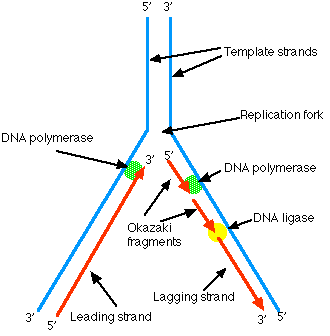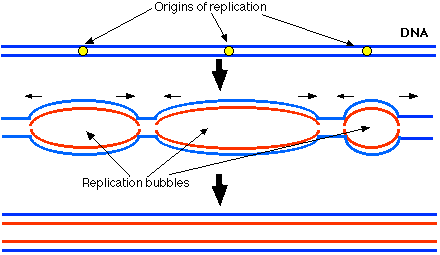Before a cell can divide, it must duplicate all its DNA. In eukaryotes, this occurs during S phase of the cell cycle.
The Steps:

The single molecule of DNA that is the E. coli genome contains 4.7 x 106 nucleotide pairs. DNA replication begins at a single, fixed location in this molecule, the replication origin, proceeds at about 1000 nucleotides per second, and thus is done in no more than 40 minutes. And thanks to the precision of the process (which includes a "proof-reading" function), the job is done with only about one incorrect nucleotide for every 109 nucleotides inserted. In other words, more often than not, the E coli genome (4.7 x 106) is copied without error!

The average human chromosome contains 150 x 106 nucleotide pairs which are copied at about 50 nucleotides per second. The process would take a month (rather than the hour it actually does) but for the fact that there are many replication origins on the eukaryotic chromosome. Replication begins at some origins earlier in S phase than at others, but the process is completed for all by the end of S phase. As replication nears completion, "bubbles" of newly replicated DNA meet and fuse, finally forming two new molecules.
| Welcome&Next Search |